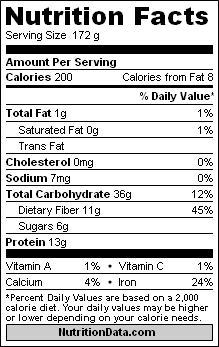This morning, I was contemplating stupid rules and how they come about. There’s some pretty bizarre laws on record in the state of New York. Here are some that I enjoyed:
- Slippers are not to be worn after 10:00 P.M.
- A person may not walk around on Sundays with an ice cream cone in his/her pocket.
- While riding in an elevator, one must talk to no one, and fold his hands while looking toward the door.
- A license must be purchased before hanging clothes on a clothesline.
Please note that I made no effort whatsoever to verify that these actually are law. I am well aware that I may be spreading misinformation, and in the likely event that I am, I apologize.
Disclaimer aside, stupid rules actually do exist all over the world. Even in my own house, I have some pretty stupid rules. They all stem from a desire to maintain the kind of order that Marlene and I feel is appropriate and necessary. Here are some interesting examples that I was reminded of while getting ready for work this morning.
Children may not talk while in timeout
On the surface, this may sound good and innocuous. It originates from some very real problems:
- Loud complaints about the reasons for, or enforcers of, the timeout
- Verbal play with other children while in timeout
- Constant pleas to be removed from timeout
However, there are some logistical problems with this rule:
- What if there is an emergency?
- What if the child needs to go to the bathroom?
Marlene and I have made the decision that the number and variety of exceptions to this rule are too many, and could pose confusion for a 2 to 5-year-old who is (presumably) trying to comply with the rule. More likely they are trying desperately to find loopholes in the rule.
Regardless, the easiest thing for all involved is to enforce the rule that absolutely no talking of any kind is permitted in timeout. If this strict ruling backfires, for example if a child really does need to go to the bathroom and pees all over the floor, Marlene and I will deal with the fallout. The downside this morning was that Jasmin was not allowed to say “goodbye” to me when I left for work, because she was in timeout and could not talk to me.
Jacob, specifically, is not allowed to anticipate his parents’ desires
Jacob has a real problem with just doing what he thinks is the right thing, regardless of instructions. This is a consistent, repeated, longstanding pattern throughout his life. Couple this with a very strong tendency to misunderstand and misinterpret situations, and it’s a recipe for disaster. Let me tell you authoritatively, disaster happens with distressing regularity.
For this reason, Jacob is reminded again and again, “Do what I told you to do, and not what you think you should be doing.” It’s a very strange message. Do I want my son to grow to be a mindless puppet who blindly follows the direction of authority? Absolutely not. But he must learn obedience before he learns the much more complex topic of when it is right and good to disobey. Here’s a hint kiddo… it’s actually right and good to disobey far less frequently than you seem to think it is. Jacob is still far from mastering the obedience lesson.
The fallout from this rule today? Jacob was helping me pack my lunch for work, and I very specifically cautioned him, “Bring me exactly the foods that I ask you for. I don’t want you to bring me everything in the refrigerator just because you think it might make a good lunch food.” Well, at one point, I sent Jacob to get me tomatoes, and he came back with tomatoes and grapes. His reasoning: “Dad, I assume you want grapes for lunch today too.”
In this instance, he was correct! I had seriously considered having grapes for lunch, and very well might have asked him to get them for me next. So how did I respond? I told Jacob that he was correct, and I did want grapes, but that he specifically disobeyed my instructions, and if it were to happen again in the future, I would not allow him to help me pack my lunch any more.
If any child mentions cows or mooing while singing “Happy Birthday”, that child will not get any birthday cake
This is the rule that got me thinking along these lines today. Jacob was playing “Happy Birthday” as part of his piano practice time, and was singing along with his playing, as he sometimes has a tendency to do. While listening to him, I was reminded of this rule.
For the last few years, the children have enjoyed adding the phrase “Cows go moo!” to the words of the “Happy Birthday” song whenever we sing it at a birthday party. It seems that each time, their ad-libbing gets more and more exaggerated. At the end of last year, at Jacob’s birthday party, the mooing and giggling were so intense that I couldn’t even hear any singing over the cacophony. Hence the rule.
So far, no child has broken this particular rule, despite its stupidity. I guess the consequences are pretty dire indeed.
– danBhentschel


